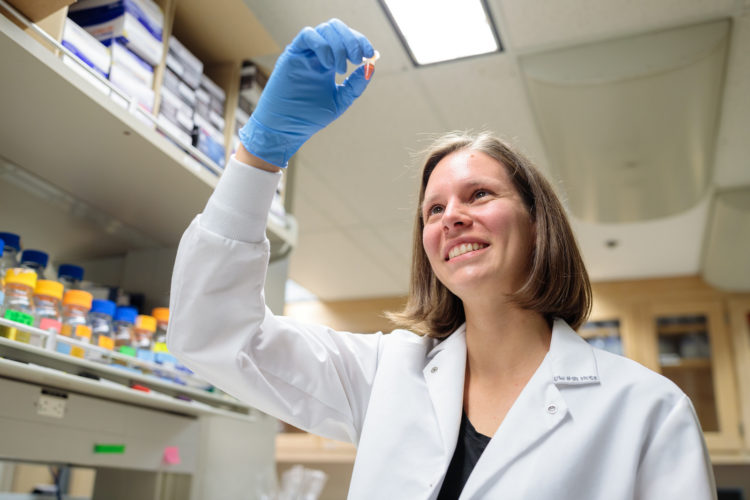
We revisited Abhi Nath and his lab team to see how their work to improve the diagnosis and treatments of neurodegenerative conditions, including Alzheimer’s, Parkinson’s, and Chronic Traumatic Encephalopathy (CTE) was progressing.
The team hopes to discover improved diagnostic tools and therapies by learning how brain proteins such as Tau, β-Amyloid and α-Synuclein start misbehaving in these diseases.
The challenge is that proteins like Tau are very flexible moving targets, almost like Jell-O™, making it hard to use traditional tools of structural biology. One of their long-term goals is to develop new small molecules that can either slow down protein aggregation, or bind to particular types of aggregates to act as a tracer.
Such tracers or tags can currently be used to detect protein aggregates in brain scans, but struggle to distinguish which particular proteins are involved, or whether aggregates are harmful or benign.
“Newer, more specific tracers could enable earlier, more accurate diagnosis of conditions like Alzheimer’s and Parkinson’s and ultimately improve outcomes for patients and their families.”–Abhi Nath

Graduate student David Baggett’s computer models can screen millions of compounds to identify molecules capable of binding proteins like Tau, and either detecting or stopping the aggregation process. As they learn more about how these compounds recognize Tau, they can perhaps engineer more effective, safer variants that could serve as the basis for new treatment and diagnosis strategies.
A new industry partnership with Takeda Pharmaceutical Co. will accelerate their research. “The Takeda award provides us with support and resources to work on designing, synthesizing, and testing new molecules— derivatives of ones that David found,” shared Abhi. “We will also use his methods to identify other novel molecules with similar activity.”
Hope Barnes Fellow and graduate student Hannah Baughman continues to discover more about molecular chaperones, which are natural defenders against protein aggregation. The NIH recently elected to support this work under a special program for Alzheimer’s disease and related dementias.
“If we can turn up the right sort of activity for the right type of chaperone, that may advance our ability to treat Alzheimer’s, Parkinson’s, and CTE,” said Abhi. “My vision is to use the advances that have been made in protein biophysics over the past 10–15 years to find new ways to diagnose these conditions early and improve treatments and outcomes for patients. Given how much we have learned about Tau and similar proteins, and our partnerships in academia and industry, I am very excited about our prospects.”
To study with researchers like Dr. Nath with peers like Hannah Baughman, click for more information about our Graduate Programs in Medicinal Chemistry.
Link to Medicinal Chemistry archived news